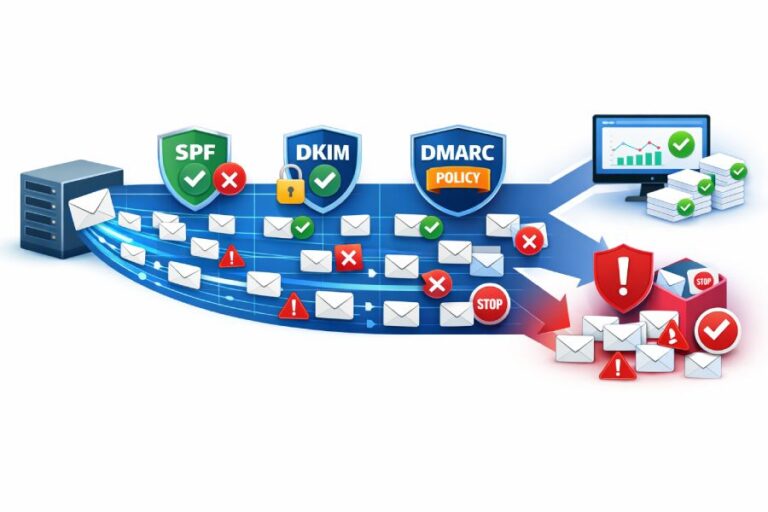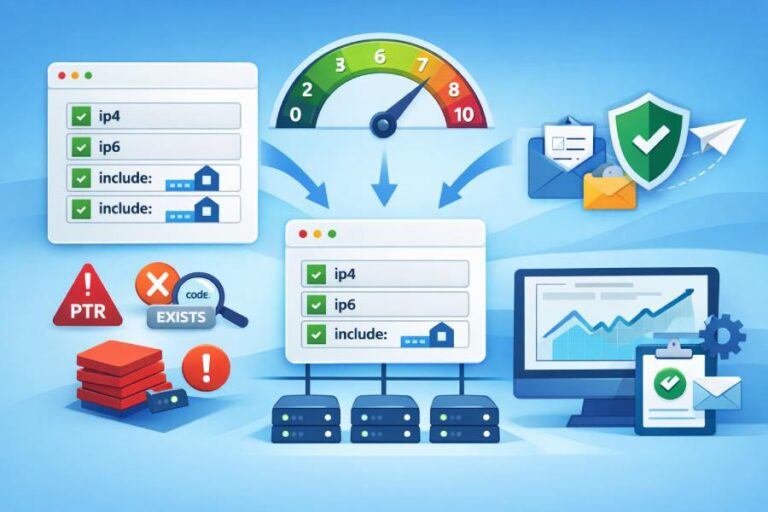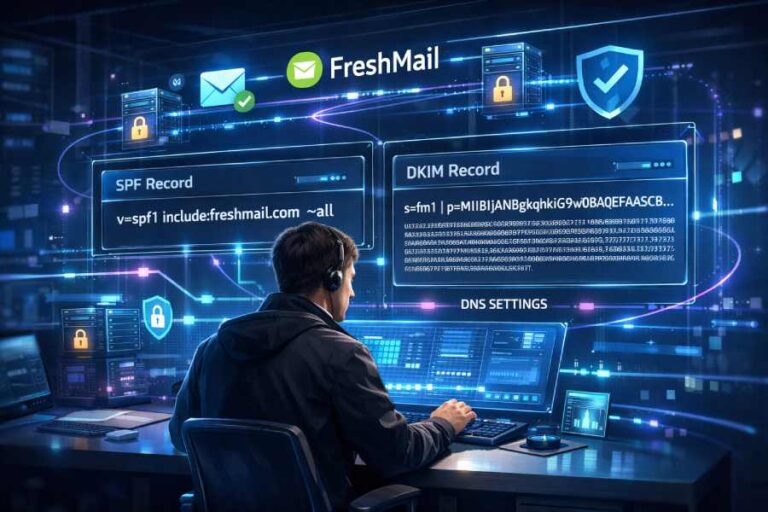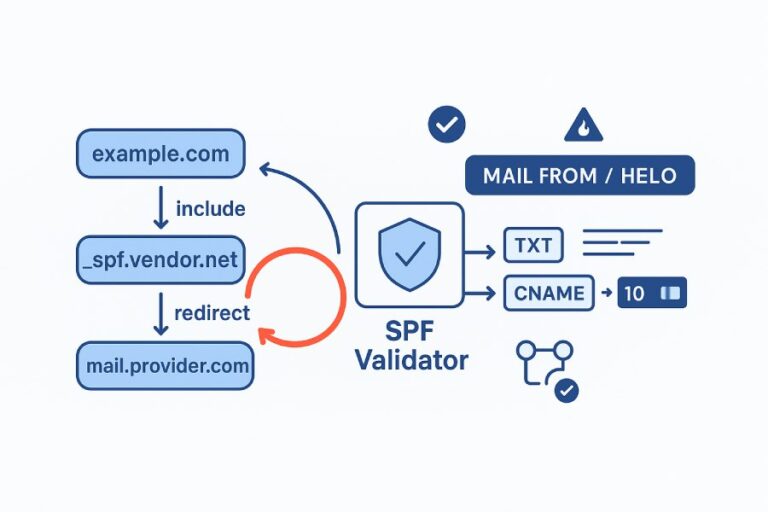How do SPF, DKIM, and DMARC interact when receivers are rejecting messages for authentication failures?
Receivers reject messages for authentication failures when neither an aligned SPF nor an aligned DKIM result passes and the domain’s DMARC policy dictates rejection (p=reject, or sometimes p=quarantine via local receiver policy), after independently evaluating SPF and DKIM, computing DMARC alignment to the RFC5322.From domain, and applying provider-specific enforcement thresholds. Email authentication is a layered…









